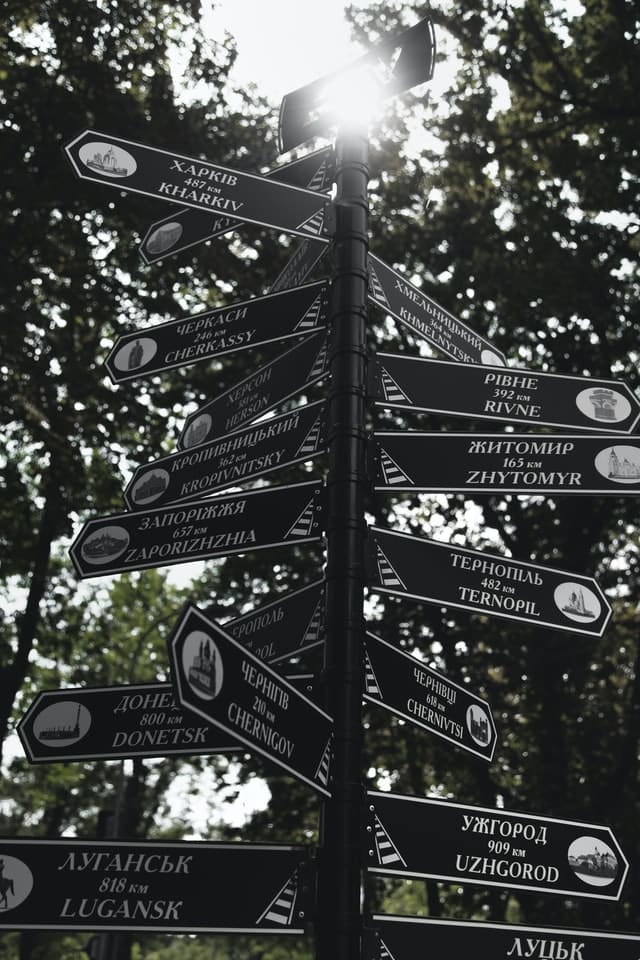A HISTORY OF SIGNS, SIGNMAKING & TYPES OF SIGNAGE
The importance of signage is hard to overstate in today’s society. One of the most powerful tools in commerce, signage too has its history. From road signs to hand-painted timber and LED-illuminated wayfinding signs, there has always been a need and a market for visual advertising tools to convey information, such as window graphics and sidewalk signs to attract attention from passer-by’s.
The history of digital signage is closely interlinked to that of traditional signage. In many ways, signage dictates our lives: it influences our decisions on what we eat, where we go, who we befriend, where we entrust our money and livelihoods, and myriad other split-second choices we make every day.
New Types Of Signage
Signs and symbols are as old as language itself, but their usage for wayfinding or commercial gain grew as civilisation grew. The Appian Way, allegedly the first Roman road, was built in 312BC. Milestones were placed at regular intervals as well as markers at crossroads stating the distance to Rome. These created a need for early road signs.
With the increase of towns and cities, and growing populations within these confines, people needed goods, services, trades and alehouses or inns. Most of the population was illiterate, so the vast majority of signs were pictorial representations of the trade or service on offer, often depicting them in action to encourage people to take part.
But all these commercial enterprises required supplies as well as customers. Merchants trading goods would travel between towns and cities supplying businesses with their wares. This gave way to a new signage industry specifically for commerce.

Progress with materials for trade signs also gave way to new availability levels, new uses, and new types of signs. What city these days could do without its plethora of wayfinding signs, safety signs and regulatory signs? In particular, these days we attribute particular importance to interior signs, which we know attract customers and convert prospects far better than isolated signage.
Signage Materials & Supplies
The materials used were mainly hand-painted (sign-written) timber or symbols and letters painted directly on stone or brick.
Moving through the centuries, the materials didn’t change a great deal, although as more of the population was able to read and write, signs became more elaborate and contained more information.
But it wasn’t until the early 20th century that we saw a huge advancement in the variety of materials used and the introduction of illumination on a large scale.
Neon signs had a massive impact on commercial signage. Developed by M George Claude, who displayed the first neon lamp to the public on December 11 1910. Its first commercial application was to advertise two Packard cars for sale in 1923.

The other highly influential material adopted by the sign-making fraternity was acrylic sheet. Introduced in the 1950s, self-coloured acrylic sheet with consistent colour and light transmission was an instant hit. Both of these products are still very widely used today.
If the introduction of neon and acrylic sheet had a significant impact on signmaking in the early part of the 20th century, the effect of computers and LED lights on the latter part of the century was even greater.

Crossing over into the 21st century, what signmaker these days does not use a vinyl plotter, digital printer, or CNC router? Techniques have changed as well, from direct-to-media printing to waterjet and laser engraving. LEDs are now omnipresent in the illumination of signs, logos and individual letters.
A Combination of Old & New
Signmaking today is blessed with the heady combination of wonderful materials from both the past and the present, teamed with hard-earned traditional skills and the computer! You can read more on how Graffiti Design combines traditional skills with innovative materials and techniques, and why handing down these skills is important.
For more news and examples of our work, follow us on Instagram, Facebook or Twitter. Browse the rest of our wide range of products and services.


